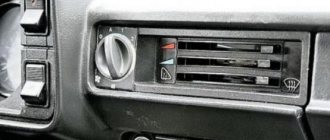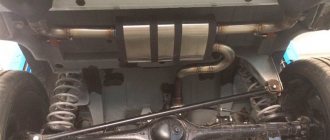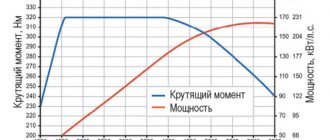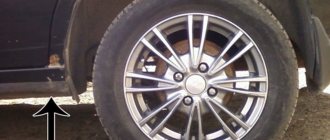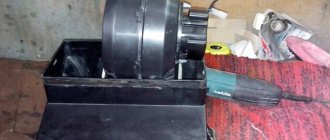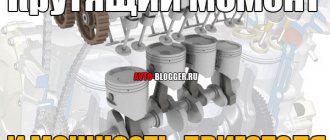Common ways to increase power rating
There are quite a few different methods of tuning internal combustion engines, many are aimed at increasing the power of the installed power unit. In the case of the Chevrolet Niva, power is most often increased. Common ways to increase engine performance are as follows:
- Turbine installation. Almost all modern mid- and high-class cars have a turbine engine. This relatively simple unit in design is capable of increasing engine power by a significant 20% of the nominal value. However, this tuning method has a fairly large number of features that are worth considering.
- In most cases, chip tuning is carried out. This kind of modification involves unlocking the full potential of the installed engine. However, not in all cases it is possible to increase engine power in this way, which should be taken into account.
- Factory components of the power unit are often replaced. Due to this, it is possible to eliminate all defects and imperfections that were made at the production stage of the vehicle.
Let's take a closer look at the most common methods of tuning a Chevrolet Niva engine.
Chevrolet Niva, engine tuning
Some owners of this car are not satisfied with its characteristics, so they are interested in how to increase the power of the Chevrolet Niva engine. This issue is especially relevant for owners of cars from the initial period of their production. At this time, the power unit from the previous model was installed, which was slightly modernized. But still, after that it did not become a more powerful motor and does not develop high speeds. However, if you look closely at the design of the engine, you can see the reserves hidden in it. Let's try to figure it out together how to increase the power of a Chevrolet Niva engine. Fans of this car and its tuning were able to develop and test several ways to modernize the power unit. They have some features, difficulties of installation and use, as well as the effects they produce.
Replacement of factory components
In order to obtain significant engine performance and increase its reliability, the main factory elements are often replaced with more advanced ones. An example would be:
- Modernization of the cylinder-piston group.
- Modernization of KShM.
- Carrying out boring of sleeves.
All of the above work makes it possible to slightly increase the volume of the combustion chamber, which leads to an increase in engine power.
In most cases, work begins with boring the inner diameter of the liners. Thereby:
- The combustion chamber increases.
- As the volume of the combustion chamber increases, the amount of fuel burned per stroke increases.
- The more fuel the engine burns, the more energy is released, which causes increased power.
Sidebar: Important: It is worth considering that after boring you will have to install new pistons and piston rings. This is due to the fact that even a slight deviation in the size of the resulting gap between the piston and the surface of the liner becomes the reason why the engine will start to operate incorrectly. Due to the fact that new pistons and rings are needed, the cost of the tuning in question increases significantly.
Quite often, an upgraded crankshaft is installed. Its features include the following points:
- Reduced weight, which reduces the structure's resistance to rotational motion, resulting in an increase in efficiency.
- The design has elongated shoulders. Due to this, the stroke of the rod increases and the torque increases.
The new crankshaft will also require shortened connecting rods.
If you bore the liners and install a new crankshaft, the volume of the combustion chamber increases from 1.7 liters to 1.9 liters. However, only increasing the volume of the combustion chamber does not give the desired result, since the engine in this case requires a larger amount of flammable liquid and more efficient saturation with oxygen. That is why, when tuning, the block head is also replaced or modernized.
Considering the modernization of the cylinder head, we note the following points:
- The inlet and outlet holes are often bored, which increases their throughput.
- Enlarging the intake and exhaust ports means that larger valves have to be installed. Very often the valve seat is bored, which also increases engine output.
Other features of the tuning carried out include the following points:
- An almost complete exhaust replacement is being carried out. Similar work is represented by increasing the diameter of the exhaust pipes. The essence of this modification is that increasing the diameter of the pipe that removes exhaust gases reduces the pressure in the system. The lower the resistance, the higher the efficiency value. You can replace the neutralizer with a flame arrester, which will also improve performance.
- It is worth considering that such serious changes to the engine require an almost complete reconfiguration of the fuel supply system. This is due to the fact that with standard settings the units will not receive the required amount of fuel. Most often, tuning the fuel system involves performing chip tuning, that is, reconfiguring the on-board computer program.
The above work makes it possible to increase the power indicator by approximately 15% of the nominal value. At the same time, do not forget that the improvements are based on increasing the volume of the cylinder block. Therefore, a certain increase in the flow rate should be expected. Nobody pays attention to the following points:
- An increase in engine power always leads to an increase in the load it experiences.
- When the load is applied, the structure becomes less strong, as the metal is ground down.
- It is very important to select high-quality and most suitable components, otherwise serious problems with engine operation may arise.
That is why today this kind of tuning is carried out extremely rarely, since it has a very large number of disadvantages. You can increase power and torque by installing a turbine. Moreover, the cost of such a modification will be much less than the above. However, it is worth remembering that if the engine is in poor technical condition, the turbine will only worsen the situation and lead to faster wear and tear of the structure. This device ensures more efficient filling of the combustion chamber with air due to artificial injection, which leads to increased power.
Pros and cons of the injector
Which is better - Niva carburetor or injector? Among the advantages of the carburetor Niva, it should be noted:
- Simple design of the power system. In the event of a breakdown, you can fix the problem yourself.
- Cheap service.
- Unpretentiousness to fuel quality. Many Soviet Nivas can easily “digest” even 76-octane gasoline.
- Lack of many sensors.
It would seem that the answer has been found to the question of which is better - a Niva carburetor or an injector. However, a carburetor engine has more disadvantages. Among them:
- Low reliability. Every season you need to adjust the carburetor and carry out its maintenance.
- Dependence on air temperatures. In winter, the spark plugs could easily be overfilled, making starting impossible until the spark plugs were subsequently unscrewed and dried. Also, in winter, due to condensation, the float often “stuck”. And in the summer the fuel pump often got hot.
- Greater fuel consumption.
- Less productivity. To unlock the potential of the engine, it was necessary to spin it up to high speeds.
No matter how simple and maintainable this power system may be, it requires a lot of attention. Over the course of a year of operation, you will have to rebuild the carburetor several times. A modern car enthusiast is unlikely to be happy with this situation (especially adjusting the carburetor or drying spark plugs in 20-degree frost).
Which is better - Niva carburetor or injector? This question interests many car enthusiasts. Here are the advantages of the injection Niva:
- Stable operation of the internal combustion engine. Thanks to the presence of IAC, owners have forgotten what floating speed is. For carburetor engines this was a real disease.
- Great performance. The fuel-injected Niva responds more quickly to the gas pedal.
- Less fuel consumption. We have already seen this by looking at the technical specifications. With the arrival of the injector, consumption decreased by 20 percent.
- Excellent starting in any weather. The injection engine does not flood the spark plugs, and in the summer the fuel pump does not overheat. The latter is submersible and is cooled by gasoline, as it is located in the tank.
- Reliability. Since there is no carburetor, there is no need to regularly tune it, change jets and clean it. The maximum that the owner of an injection-powered Niva can do is clean the throttle valve, but this procedure is by no means mandatory. It is recommended to do this only if the car selects high idle speeds.
Also interesting: What you need to know about the VAZ 21213 engine before buying a Niva | Weak engine
What are the disadvantages of the fuel-injected Niva? There aren't many of them. Since more electronics have been added to the system, owners may experience faulty control sensors. If the car begins to consume a lot of fuel, it is worth looking at the mass air flow sensor. If the engine does not maintain normal speed at idle, the IAC may be to blame.
And if the engine refuses to start, the contact may have come loose from the crankshaft position sensor. But fortunately, these problems don't happen that often. And you can diagnose them with a simple multimeter by measuring the resistance or contact voltage of one of the sensors. Thus, breakdowns mainly concern only electronics. The mechanical part does not raise any questions.
Expert opinion
Vadim. After I moved to Niva from a foreign car, it immediately became clear that the engine would need to be completed. The lack of traction in almost any gear determines that you cannot drive comfortably off-road, and the car will not perform well on the highway. I did the tuning in stages, starting with the simplest
Egor. I decided to install a turbine on the car in question. The increase in power is quite impressive, but I decided to increase the figure by installing new sports-type consumable filters and replaced the exhaust system. I will say that the difference between 80 and 100 hp. very big.
Dmitriy. Conducted a modernization of the standard engine. I’ll say right away that no amount of tuning will solve one problem - engines of domestic origin have low reliability, you have to constantly change and finish something.
Drawing conclusions
When looking for an affordable off-road SUV, many pay attention to this particular offer. However, it is worth considering that the installed motor first requires repair, and then significant modernization. Lack of power off-road becomes the reason why the car cannot overcome difficult areas. There are quite a large number of ways to increase power, they all have their own specific characteristics. Here are the best slots at russvulcans-clubss.com/.
Some modifications can be done independently, others require the intervention of professionals. Note that the power increase is 20 hp. - a completely achievable task without serious intervention in the design of the motor. Of course, many improvements will require significant investments. An example is the installation of sports filters, which are much more expensive than regular filters.

